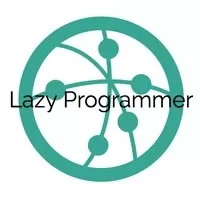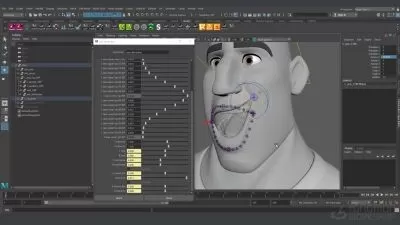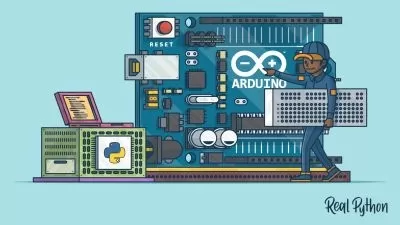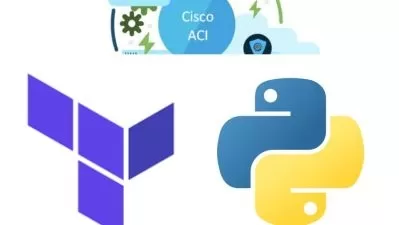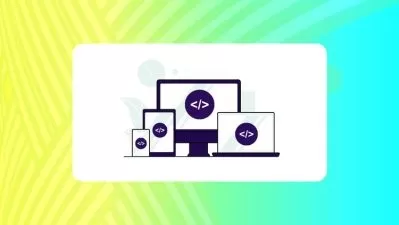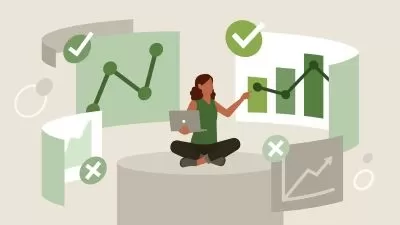Data Science & Machine Learning: Naive Bayes in Python
Lazy Programmer Inc.,Lazy Programmer Team
5:00:43
Description
Master a crucial artificial intelligence algorithm and skyrocket your Python programming skills
What You'll Learn?
- Apply Naive Bayes to image classification (Computer Vision)
- Apply Naive Bayes to text classification (NLP)
- Apply Naive Bayes to Disease Prediction, Genomics, and Financial Analysis
- Understand Naive Bayes concepts and algorithm
- Implement multiple Naive Bayes models from scratch
Who is this for?
More details
DescriptionIn this self-paced course, you will learn how to apply Naive Bayes to many real-world datasets in a wide variety of areas, such as:
computer vision
natural language processing
financial analysis
healthcare
genomics
Why should you take this course? Naive Bayes is one of the fundamental algorithms in machine learning, data science, and artificial intelligence. No practitioner is complete without mastering it.
This course is designed to be appropriate for all levels of students, whether you are beginner, intermediate, or advanced. You'll learn both the intuition for how Naive Bayes works and how to apply it effectively while accounting for the unique characteristics of the Naive Bayes algorithm. You'll learn about when and why to use the different versions of Naive Bayes included in Scikit-Learn, including GaussianNB, BernoulliNB, and MultinomialNB.
In the advanced section of the course, you will learn about how Naive Bayes really works under the hood. You will also learn how to implement several variants of Naive Bayes from scratch, including Gaussian Naive Bayes, Bernoulli Naive Bayes, and Multinomial Naive Bayes. The advanced section will require knowledge of probability, so be prepared!
Thank you for reading and I hope to see you soon!
Suggested Prerequisites:
Decent Python programming skill
Comfortable with data science libraries like Numpy and Matplotlib
For the advanced section, probability knowledge is required
WHATÂ ORDERÂ SHOULDÂ IÂ TAKEÂ YOURÂ COURSESÂ IN?
Check out the lecture "Machine Learning and AIÂ Prerequisite Roadmap" (available in the FAQ of any of my courses, including my free course)
UNIQUEÂ FEATURES
Every line of code explained in detail - email me any time if you disagree
Less than 24 hour response time on Q&AÂ on average
Not afraid of university-level math - get important details about algorithms that other courses leave out
Who this course is for:
- Beginner Python developers curious about data science and machine learning
- Students and professionals interested in machine learning fundamentals
In this self-paced course, you will learn how to apply Naive Bayes to many real-world datasets in a wide variety of areas, such as:
computer vision
natural language processing
financial analysis
healthcare
genomics
Why should you take this course? Naive Bayes is one of the fundamental algorithms in machine learning, data science, and artificial intelligence. No practitioner is complete without mastering it.
This course is designed to be appropriate for all levels of students, whether you are beginner, intermediate, or advanced. You'll learn both the intuition for how Naive Bayes works and how to apply it effectively while accounting for the unique characteristics of the Naive Bayes algorithm. You'll learn about when and why to use the different versions of Naive Bayes included in Scikit-Learn, including GaussianNB, BernoulliNB, and MultinomialNB.
In the advanced section of the course, you will learn about how Naive Bayes really works under the hood. You will also learn how to implement several variants of Naive Bayes from scratch, including Gaussian Naive Bayes, Bernoulli Naive Bayes, and Multinomial Naive Bayes. The advanced section will require knowledge of probability, so be prepared!
Thank you for reading and I hope to see you soon!
Suggested Prerequisites:
Decent Python programming skill
Comfortable with data science libraries like Numpy and Matplotlib
For the advanced section, probability knowledge is required
WHATÂ ORDERÂ SHOULDÂ IÂ TAKEÂ YOURÂ COURSESÂ IN?
Check out the lecture "Machine Learning and AIÂ Prerequisite Roadmap" (available in the FAQ of any of my courses, including my free course)
UNIQUEÂ FEATURES
Every line of code explained in detail - email me any time if you disagree
Less than 24 hour response time on Q&AÂ on average
Not afraid of university-level math - get important details about algorithms that other courses leave out
Who this course is for:
- Beginner Python developers curious about data science and machine learning
- Students and professionals interested in machine learning fundamentals
User Reviews
Rating
Lazy Programmer Inc.
Instructor's CoursesLazy Programmer Team
Instructor's Courses
Udemy
View courses Udemy- language english
- Training sessions 32
- duration 5:00:43
- Release Date 2022/12/14





